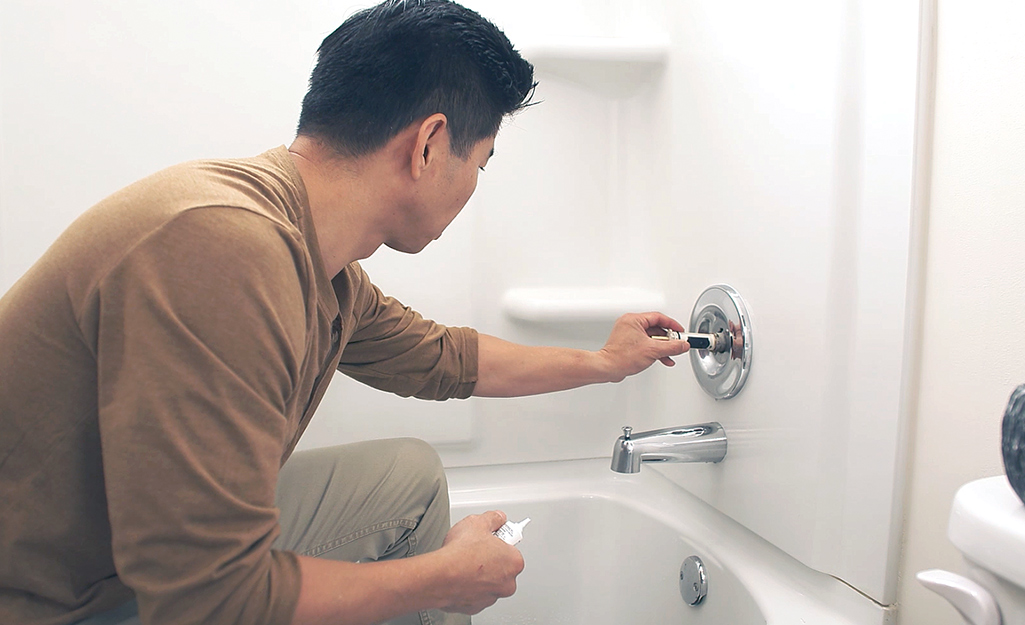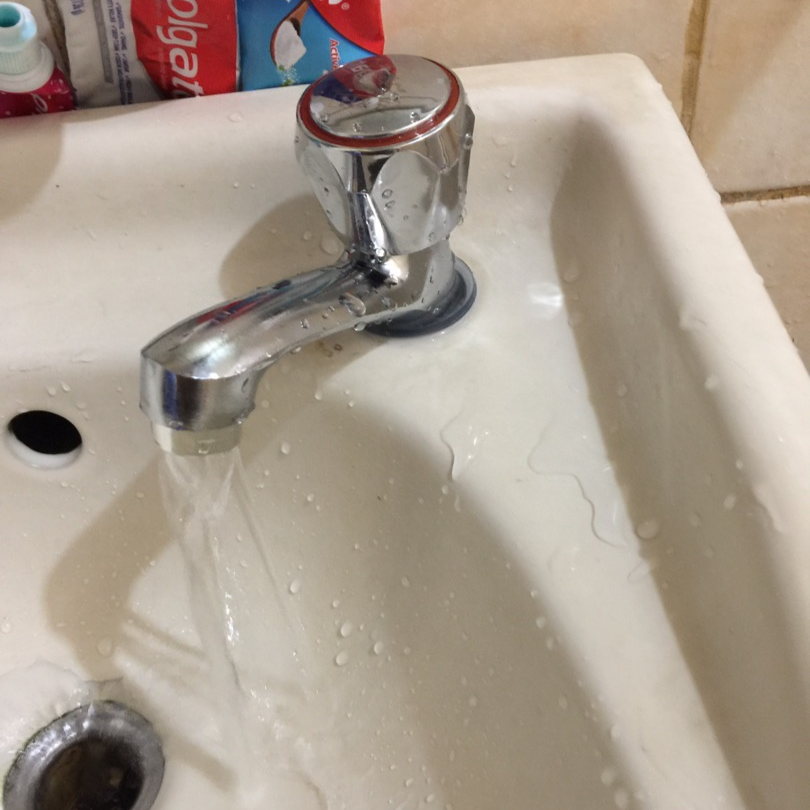What It's Crucial to Rectify a Broken Faucet
What It's Crucial to Rectify a Broken Faucet
Blog Article
The article below relating to Water Dripping from Faucet: Why and How to Fix is extremely stimulating. Have a go and make your own personal findings.

Trickling faucets may seem like a minor trouble, but their effect surpasses just the nuisance of the audio. From wasting water to incurring unneeded economic prices and health risks, disregarding a trickling tap can bring about different repercussions. In this post, we'll look into why it's critical to resolve this usual household concern promptly and effectively.
Wastage of Water
Ecological Influence
Trickling taps contribute dramatically to water wastefulness. According to the Epa (EPA), a solitary faucet dripping at one drip per secondly can lose more than 3,000 gallons of water per year. This not just strains water sources yet additionally impacts ecological communities and wild animals dependent on them.
Financial Prices
Enhanced Water Bills
Past the environmental influence, dripping taps can inflate water costs substantially. The gathered wastage with time translates right into higher utility expenditures, which could have been prevented with timely repair work.
Potential Property Damage
Moreover, long term dripping can lead to harm to components and surface areas surrounding the faucet. Water buildup can create discoloration, rust, and even structural concerns if left neglected, leading to additional fixing expenses.
Health Problems
Mold And Mildew and Mildew Development
The constant visibility of wetness from a leaking tap produces a perfect setting for mold and mold development. These fungi not just compromise indoor air top quality but likewise posture wellness risks, especially for people with respiratory conditions or allergies.
Waterborne Conditions
Stagnant water in trickling faucets can come to be a breeding place for germs and various other microorganisms, boosting the risk of waterborne conditions. Contaminants such as Legionella microorganisms flourish in stationary water, potentially bring about serious ailments when ingested or breathed in.
Do it yourself vs. Professional Repair
Benefits and drawbacks of DIY Repair Work
While some might try to repair a leaking tap themselves, do it yourself repair work include their very own collection of challenges. Without proper understanding and devices, do it yourself attempts can exacerbate the issue or result in insufficient repair services, lengthening the trouble.
Advantages of Working With an Expert Plumber
Working with a specialist plumber makes certain that the underlying source of the dripping faucet is resolved efficiently. Plumbings have the proficiency and devices to detect and repair faucet problems successfully, saving time and decreasing the threat of further damage.
Step-by-Step Guide to Taking Care Of a Dripping Tap
Devices Called for
Prior to trying to fix a dripping faucet, collect the needed tools, including an adjustable wrench, screwdrivers, replacement parts (such as washers or cartridges), and plumber's tape.
Usual Tap Issues and Their Solutions
Determine the kind of faucet and the specific issue creating the drip. Typical issues consist of worn-out washing machines, rusty valve seats, or faulty O-rings. Describe maker instructions or online tutorials for detailed assistance on repairs.
Safety nets
Regular Maintenance Tips
To stop leaking taps, carry out regular maintenance such as cleansing aerators, examining for leakages, and replacing damaged components quickly. In addition, consider setting up water-saving gadgets or updating to more effective components.
Relevance of Prompt Repairs
Attending to trickling faucets as soon as they're discovered stops more water wastefulness and potential damages, eventually conserving both water and cash in the future.
Influence On Home Value
Understanding of Well-Maintained Residential Property
Preserving a residential or commercial property in good condition, including addressing upkeep concerns like trickling taps, enhances its viewed value and worth among possible buyers or occupants.
Influence on Resale Value
Characteristics with well-kept plumbing components, including faucets, command greater resale worths in the real estate market. Dealing with trickling taps can add to a positive perception during residential or commercial property assessments and settlements.
Ecological Duty
Specific Payment to Preservation
Taking duty for dealing with dripping taps straightens with more comprehensive initiatives towards water preservation and environmental sustainability. Every individual's actions jointly make a significant impact on maintaining priceless sources.
Sustainable Living Practices
By prioritizing punctual repair services and embracing water-saving habits, people add to sustainable living techniques that benefit both present and future generations.
Conclusion
Resolving a leaking tap exceeds mere ease; it's a vital step towards conserving water, minimizing financial expenses, and safeguarding health and wellness and property. Whether with DIY repair services or professional support, doing something about it to fix leaking taps is a small yet impactful way to promote accountable stewardship of sources and contribute to a healthier, much more lasting future.
Why Are My Faucets Dripping (And Can I Fix it Myself)?
Causes of a Dripping or Leaking Faucet
Whether you’re hearing drops of water falling and hitting a sink, or noticing water ooze out from the base of the spout, you shouldn’t ignore a dripping or leaking faucet. And, the good news is, sometimes you can fix the problem yourself.
In this article, we’ll review a few common causes of dripping and leaky. We’ll also walk you through some basic ways to find the problem and handle it without calling anyone — and let you know when to call in a pro.
But, no matter what the cause, or whether you can handle it on your own, the sooner you address it, the better.
Each drip may be a tiny amount of water. But, they all add up quickly. According to the U.S. Geological Survey, one faucet losing one drop every 20 seconds — five a minute — wastes around a liter of water every day, and 173 gallons a year.
Add in more than one in your house, and it’s a lot of water to waste. So, we’ll help you get to the bottom of things quickly.
Four Reasons Your Faucet May Be Dripping
Aerator is Damaged or Unseated Valve Seat is Corroded O Ring is Loose or Worn Out Part of the Assembly is Loose Aerator is Damaged or Unseated
If you unscrew the end of your faucet, you’ll find the aerator. It’s the little stem piece with a screen on it that shuts off the water circulation.
If it’s damaged, or if it’s not sitting right, it will allow water to pass through.
Valve Seat is Corroded
Next is the valve seat, which is connected to the washer. If the washer wasn’t in place correctly, then it could have ground against the seat. Over time, this damages the valve seat.
The problem could also be corrosion: Over time, the part has worn out, and it’s now allowing water to pass through.
O Ring is Loose or Worn Out
Since the o ring is only a small rubber gasket, it’s a common reason why the faucet is dripping. You’ll find it at the base of the faucet, and it’s there to keep water from coming out where it’s not supposed to.
However, it’s common for the o ring to wear out over time. When it does, you’ll notice a drip.
Part of the Assembly is Loose
So far, we’ve looked at a few small, specific parts. But, the problem could be anywhere in the assembly if something’s out of place.
Even if a part isn’t damaged, over time, it may have become loose or dislodged. It could be the parts we mentioned, or the aerator at the tip of the faucet, the stem itself,
Can I Fix a Leaky Faucet Myself?
Depending on the problem, and how handy you are, there’s a chance you can fix a leaky faucet without calling a professional. But, you do run the risk of making the problem worse.
If it’s a small drip, you can certainly try a few troubleshooting tactics. We’ll walk you through them in a moment.
But, no matter what, your first step should be shutting off the water coming into the faucet. You should find a shutoff valve under the sink on the pipes leading to it. Turn each one clockwise until they close tightly.
Next, make sure you have the right tools for whatever you’re attempting. It’s tempting to make do with what you have. But, you need the right ones for a reason: You’re often dealing with small parts that can break if you handle them carelessly.
If you’re feeling confident, here are some places to start.
Items Near the Tip of the Faucet
A few of the parts we mentioned — particularly the valve seat and washer — are located at the tip of the faucet where the water comes out. They’re easy to access, making it a good place to start.
Check the O Ring
To check the o ring, you’ll need to take off the spout at the base. It’s easiest on kitchen sinks with long spouts, versus the smaller, bulkier base on most bathroom sinks.
Either way, this can be tricky, so do it carefully and don’t force anything. If it’s not coming right off, you’re much better off calling in a pro than possibly breaking something.
For a kitchen sink, there’s usually a nut or coupling assembly at the base of the spout. These often slide off easily without using any tools.
Once you’ve disassembled those parts, gently but forcefully twist off the spout.
Then, you can see the o rings. There should be two of the rubber gaskets on the base. If they look worn or damaged, replace them, and see if that solves the problem.

Do you appreciate reading up on How to Fix a Dripping or Leaky Faucet ? Post a remark down below. We will be happy to know your suggestions about this review. Hoping that you come back again soon. Sharing is caring. Helping people is fun. Thanks a lot for your time. Return soon.
Report this page